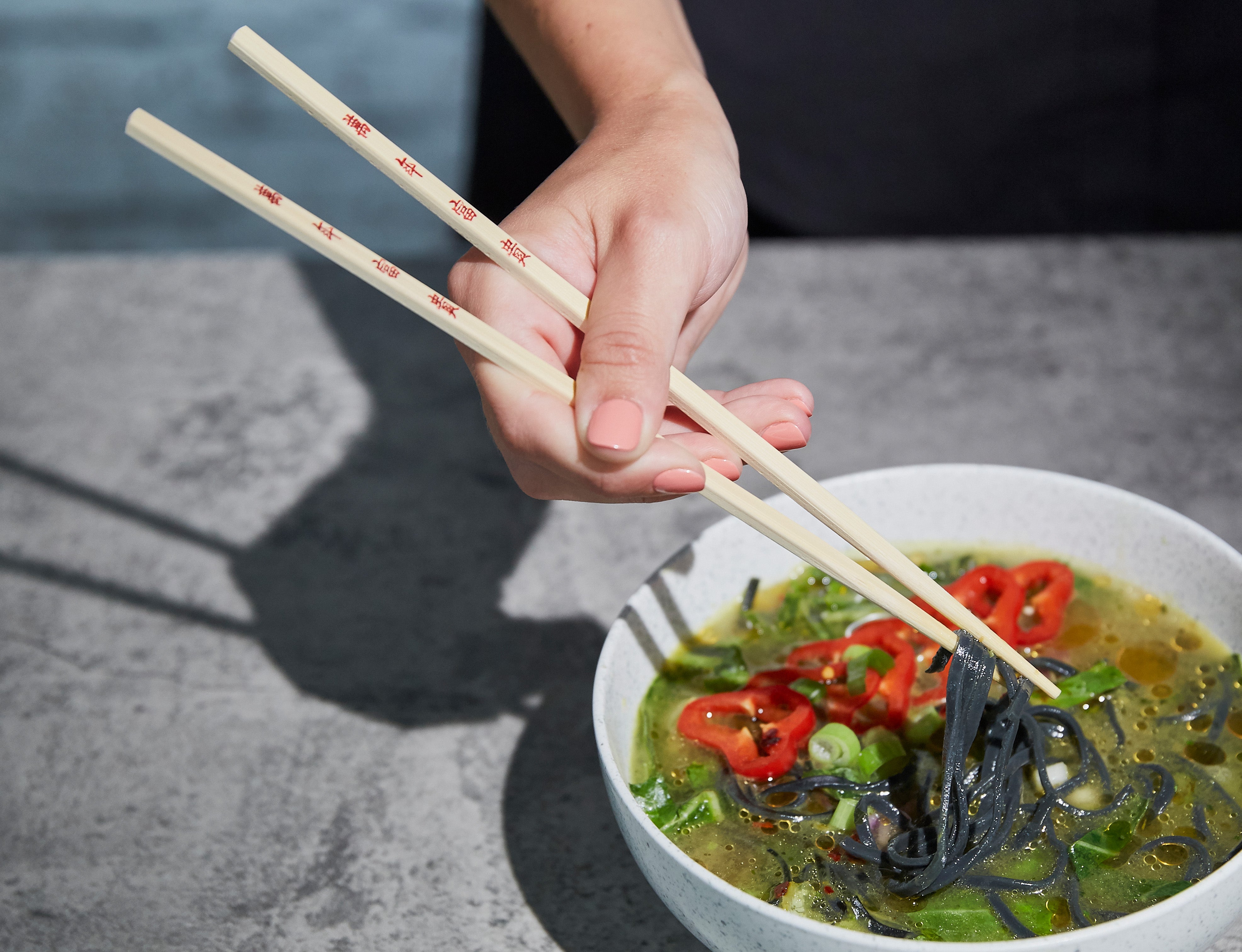Article: How To Use Chopsticks

How To Use Chopsticks
All lovers of Asian cuisine will be familiar with chopsticks. The difference is whether you can use them confidently, or give it a quick go before retreating to the comfort zone of a knife and fork. There’s no denying it’s a difficult skill to master — but following our tips, you’ll be a pro in no time. Get some chopsticks at the ready and follow our step by step guide!
What are chopsticks?
To give a simple definition, chopsticks are pairs of shaped, equal-length sticks that are used for eating and cooking in most East Asian countries. Their origins date back to China in 1200 BC, but by as early as the 5th Century, they were commonly used in Japan, Vietnam and other Asian countries. As the popularity of these cuisines has spread, so has chopstick use.
Today, around a third of the world’s population use chopsticks on a daily basis!
With such a long history, they’ve had more of an influence on Asian cuisines than you might think. Rather than simply being a means to eat, they’ve influenced how dishes have evolved.
Over time, the way people have chopped and cooked has developed in a way that makes food better suited to chopsticks. In the process, they’ve removed the need for knives on tables most of the time, which is one of the reasons they’re considered superior.
Traditionally, they’re made from metal, ceramics, wood, or the green alternative to wood: bamboo. Sometimes less conventional materials are used, too, like carbon fibre or acrylic. And the style differs between countries. Chinese chopsticks are the longest variety used in Asia, as they’re often used during high-heat frying and steaming.
The Japanese often lift their bowls closer to their mouths, so in Japan, they’re often much shorter; and Korean chopsticks are mostly metal. While some may only use chopsticks for certain foods, such as noodles, those in East Asian countries will use them for the majority of meals. But what remains consistent is how you hold and eat with them.
How to use chopsticks
Start by picking up a single chopstick and holding it between your thumb and your index finger, just as you would a pen. This will be the upper chopstick. First, practice moving this chopstick on its own. Remember not to clench it too firmly — your hand should be fairly relaxed.
Now for the second chopstick. Place it between your index finger and the thumb, so it rests on your middle finger. Then grasp the second chopstick using your thumb, index and middle fingers. Be careful not to place them too close to the end of your fingers.
The upper chopstick should be moving, and the bottom still. Use the index and middle fingers to close the chopsticks. Try this a few times, carefully inserting the chopsticks between the right fingers then opening and closing them. When you feel ready, start picking things up with them. Soon, it will become natural instinct, and you’ll be able to do it without a second thought!
Chopstick etiquette
As chopsticks are a major part of these countries’ cultures, there are many different rules and etiquettes surrounding their use. To ensure you’re using yours properly and respectfully, and to make a better impression on those around you, here are a few things you’ll need to bear in mind:
- Don’t rest chopsticks on the side of your bowl. Restaurants will often provide a chopstick rest for when you’re not using them. If you’re using disposable chopsticks, make a rest out of the paper chopstick wrapper.
- When not using chopsticks, position them parallel to one another. Leaving them crossed is seriously frowned upon, as it represents death in China.
- Don’t stick chopsticks in a bowl of rice vertically — this also symbolises death.
- Don’t use chopsticks to pull dishes towards you.
- Don’t pass food from chopstick to chopstick.
- Don’t play with your chopsticks. Basically remember they’re for eating and cooking. Any other use at the table will be considered rude or childish.
- Don’t stab food. Pick it up as you’ve practiced to!
- And finally, if you’re in a restaurant or at someone’s home, don’t rub chopsticks together. This implies that you’re unimpressed by their quality. If you’re using disposable chopsticks, this is fine to do.
We hope this has provided a useful introduction to the world of chopsticks, and you’ve gained confidence in using them as! If you’re considering buying a set and don’t know where to start, try Ken Hom’s Set of 4 Bamboo Chopsticks.

